Anthracnose of Grapes
Return to Diseases
Anthracnose (Elsinoe ampelina) is a prevalent fungal disease that causes stem cankers and shoot dieback. Symptoms first appear as small red spots on succulent tissue, such as shoots, pedicels, tendrils, and cluster stems (rachises). Spots on shoots enlarge and become sunken with dark, reddish-brown to purple borders and gray to tan centers. Centers of lesions often crack and may resemble hail damage. Leaf spots resemble shoot lesions and become angular as they reach leaf veins; centers of spots may drop out. Berry symptoms also begin as red spots, enlarge to about ¼ inch diameter, and become sunken with wide, reddish-brown to purple borders and gray-tan centers. Tiny black fruiting structures (acervuli) are visible in centers of fruit spots and may exude masses of pink spores (conidia). The fungus overwinters (sclerotia, ascospores, or conidia) on infected shoots; in spring, infection can occur after 24 hours of wetness. Secondary spread is caused by splashing conidia. The higher the temperature, the faster the spread. Disease is more severe during years with heavy rainfall.
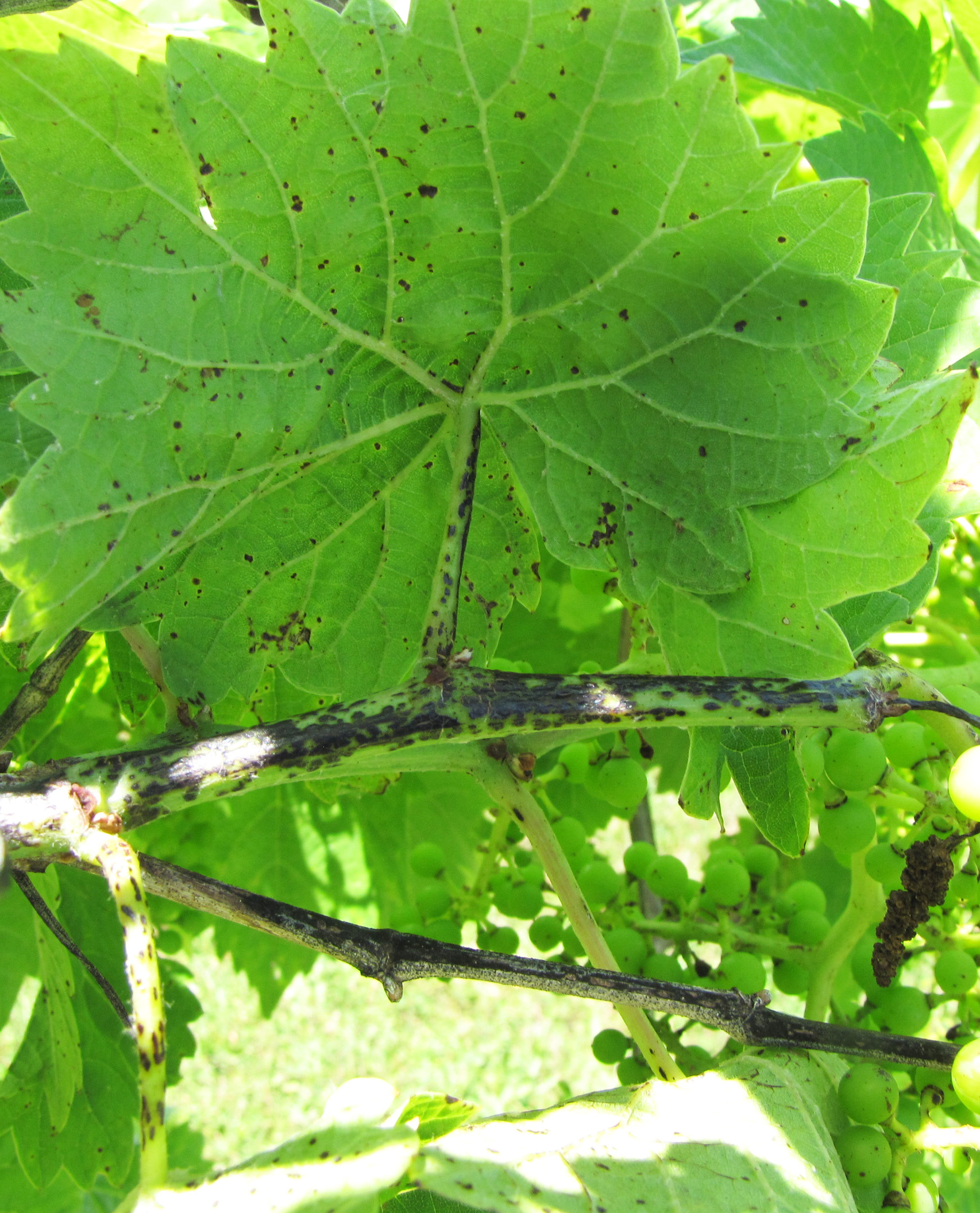
Anthracnose on grapevine.
(Photo: Daniel Becker, University of Kentucky)
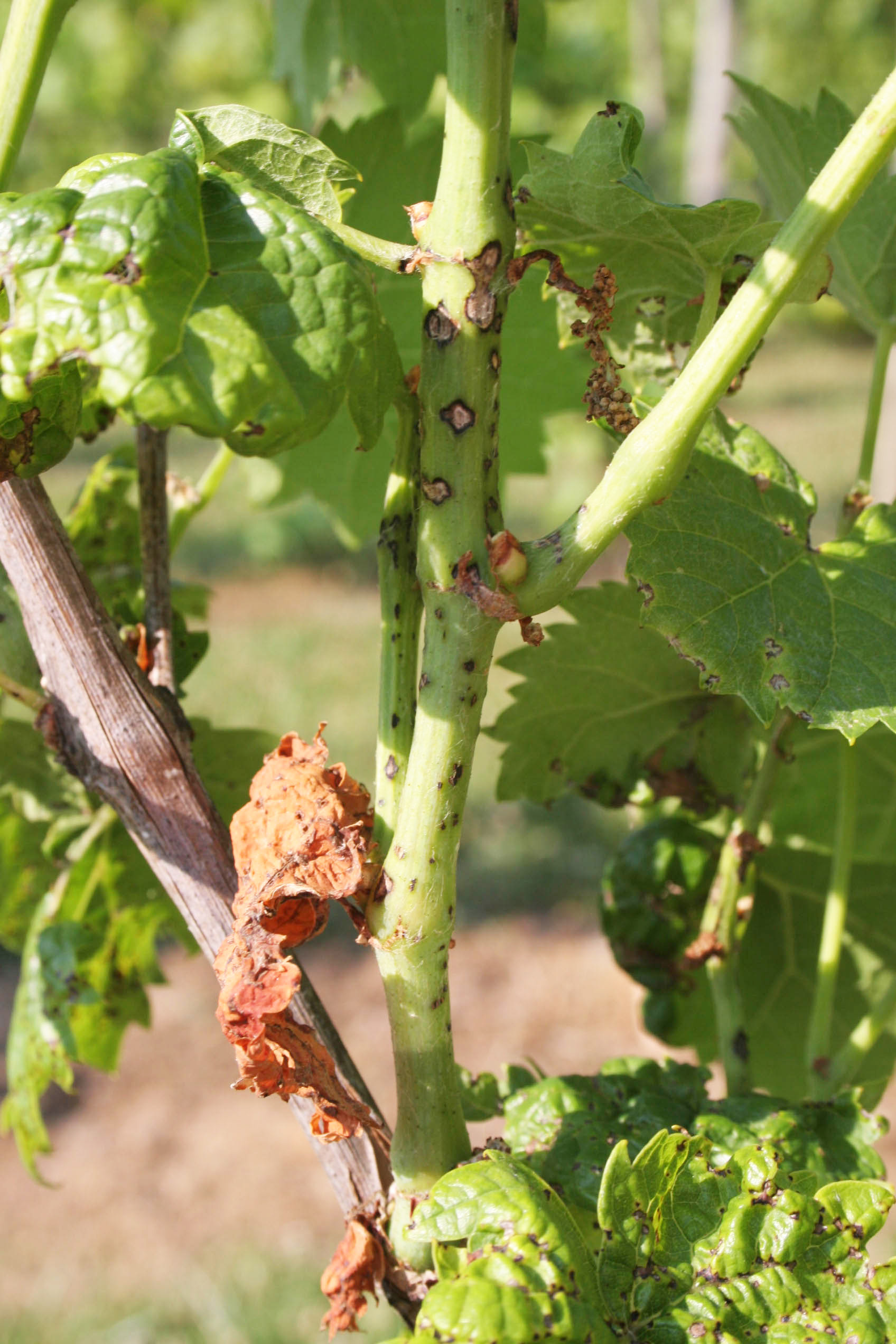
Anthracnose spots on canes with dark borders and tan centers.
(Photo: John Strang, University of Kentucky)
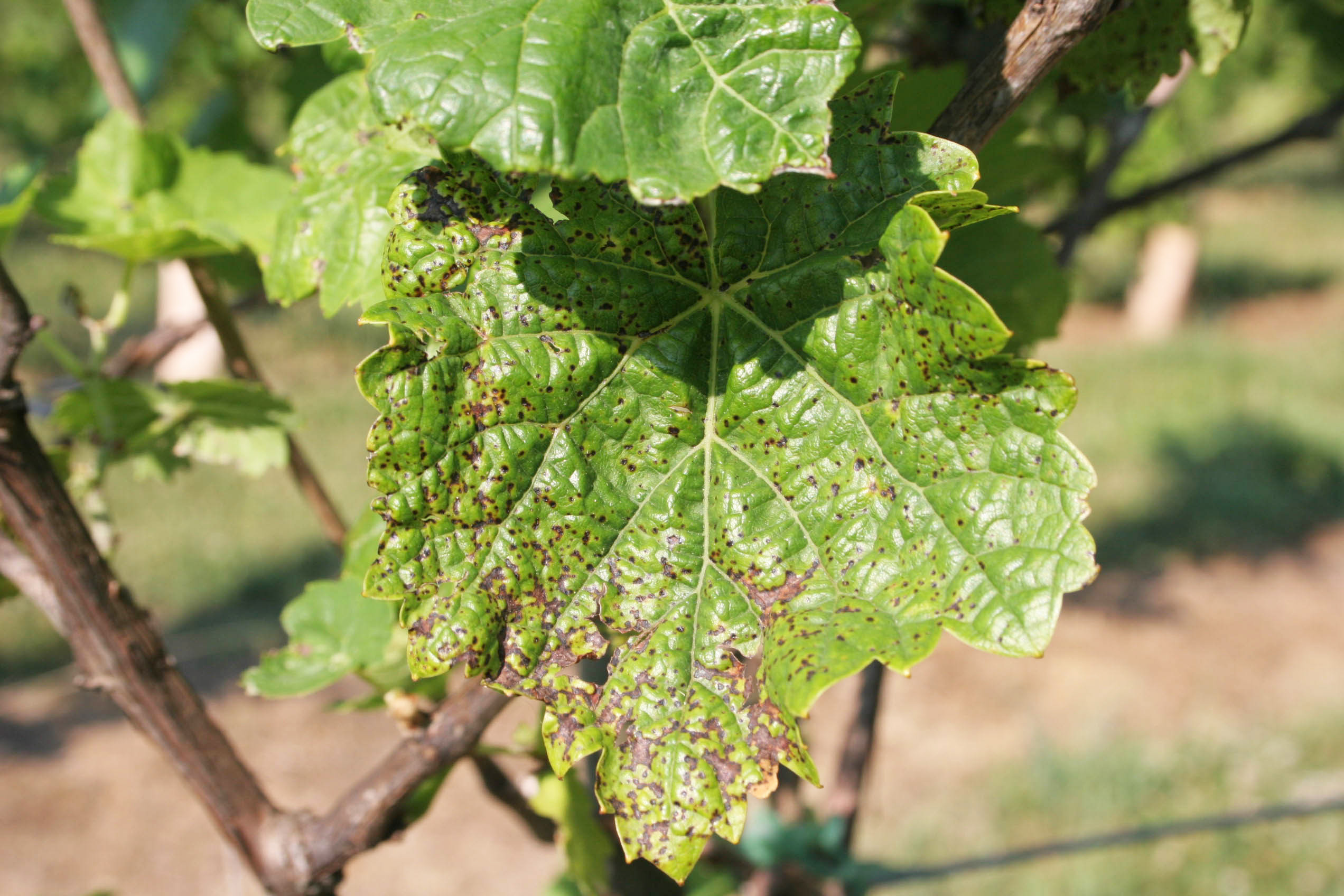
Anthracnose foliar symptoms.
(Photo: John Strang, University of Kentucky)
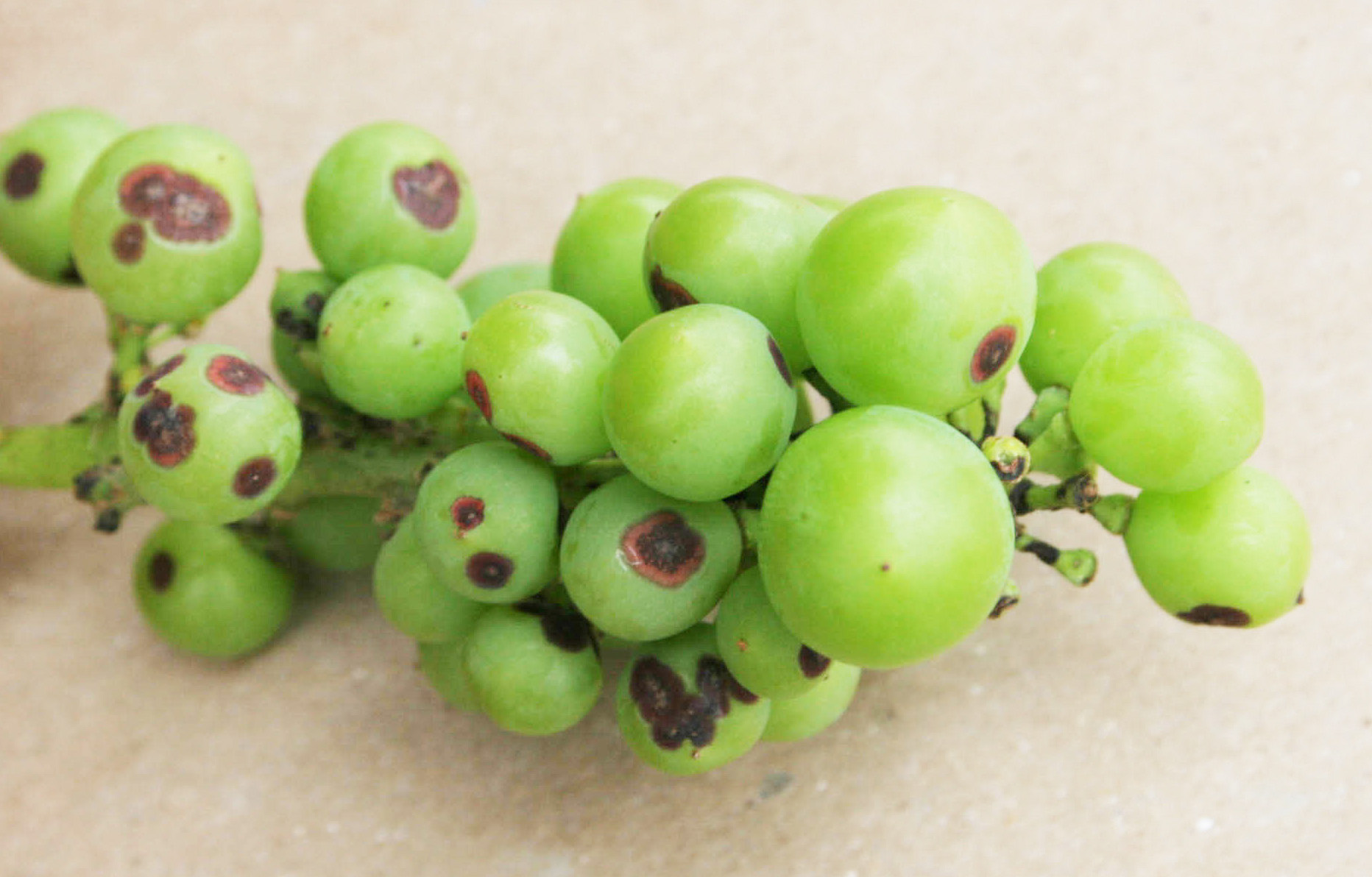
Anthracnose damage to fruit.
(Photo: John Strang, University of Kentucky)
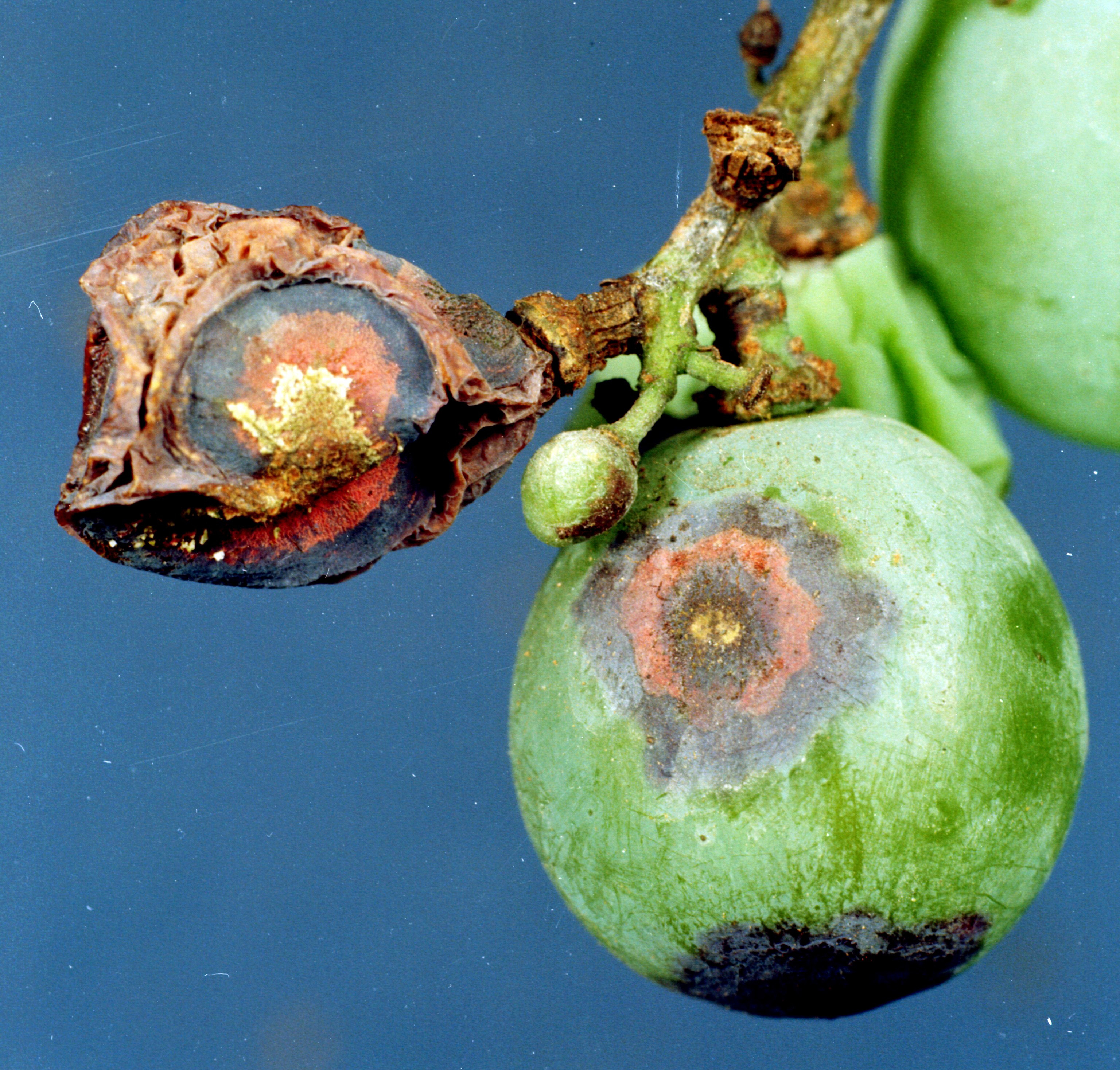
Close-up of advanced Anthracnose symptoms on fruit.
(Photo: Clemson-USDA Cooperative Extension Slide Series, Bugwood.org)
Management:
- Practice proper sanitation (remove infected canes; destroy prunings or discard away from plantings).
- Increase air circulation to encourage drying of plant tissues (pruning, thinning, spacing, managing weeds).
- Apply fungicides (especially dormant application).
- Consider planting tolerant cultivars and/or species (American type)
